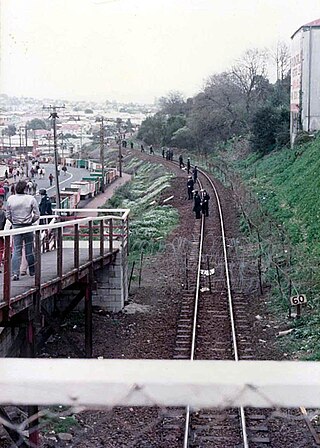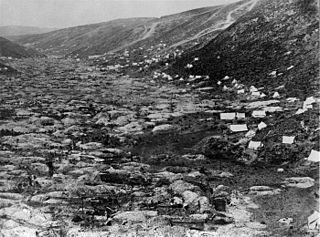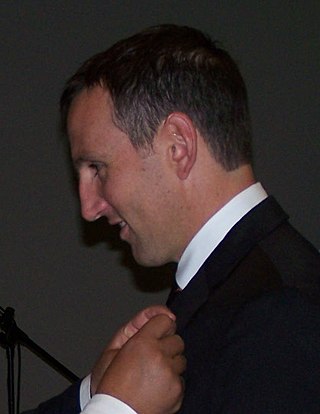Related Research Articles

Waitangi Day, the national day of New Zealand, marks the anniversary of the initial signing—on 6 February 1840—of the Treaty of Waitangi. The Treaty of Waitangi was an agreement towards British sovereignty by representatives of the Crown and indigenous Māori chiefs, and so is regarded by many as the founding document of the nation.

The 1981 South African rugby tour polarised opinions and inspired widespread protests across New Zealand. The controversy also extended to the United States, where the South African rugby team continued their tour after departing New Zealand.
Dominion Day was a day commemorating the granting of certain countries Dominion status — that is, "autonomous Communities within the British Empire, equal in status, in no way subordinate one to another in any aspect of their domestic or external affairs, though united by a common allegiance to the Crown, and freely associated as members of the British Commonwealth of Nations". It was an official public holiday in Canada from 1879 to 1982, where it was celebrated on 1 July; that date is now known as Canada Day. In the Dominion of New Zealand, the anniversary of the granting of Dominion status, on 26 September, was observed as Dominion Day; it was never a public holiday.

Cromwell is a town in Central Otago region of the South Island of New Zealand. Cromwell is located on the shores of Lake Dunstan where the Kawarau river joins Lake Dunstan. Cromwell was established during the Otago gold rush and is now more known as one of the sub regions of the Central Otago wine region. In 2018, the town of Cromwell was home to a population of 5610 people.

Susan Jane Kedgley is a New Zealand politician, food campaigner and author. Before entering politics Kedgley worked for the United Nations in New York for 8 years and for a decade as a television reporter, director and producer in New Zealand.

Otakou is a settlement within the boundaries of the city of Dunedin, New Zealand. It is located 25 kilometres from the city centre at the eastern end of Otago Peninsula, close to the entrance of Otago Harbour. Though a small fishing village, Otakou is important in the history of Otago for several reasons. The settlement is the modern centre and traditional home of the Ōtākou rūnanga (assembly) of Ngāi Tahu. In 1946 Otakou Fisheries was founded in the township; this was later to become a major part of the Otago fishing industry.

Gabriel's Gully is a locality in Otago, New Zealand, three kilometres from Lawrence township and close to the Tuapeka River. It was the site of New Zealand's first major gold rush.

Henrietta Catherine Angus, known as Rita Cook early in her career, was a New Zealand painter who, alongside Colin McCahon and Toss Woollaston, is regarded as one of the leading figures in twentieth-century New Zealand art. She worked primarily in oil and watercolour, and became known for her portraits and landscapes.
The following lists events that happened during 1964 in New Zealand.
The Frances Hodgkins Fellowship, established in 1962, is one of New Zealand's premier arts residencies. The list of past fellows includes many of New Zealand's most notable artists.
The New Zealand and South Seas International Exhibition was a world's fair held in Dunedin, New Zealand, from 17 November 1925 until 1 May 1926, which celebrated that country and the South Seas. It was the third such exhibition held in Dunedin, with earlier exhibitions in 1865 and 1889. The exhibition had over 3 million visitors. It had added a new 'Special Exhibits' section focusing on art and craftwork made by women, a breakthrough that lifted the profile of women's art and craftwork.

The villages and then city that lay at the head of Otago Harbour never existed in isolation, but have always been a staging ground between inland Otago and the wider world. While Dunedin's current official city limits extend north to Waikouaiti, inland to Middlemarch and south to the Taieri River mouth, this articles focus is the history of the Dunedin urban area, only mentioning Mosgiel, the Otago Peninsula, Port Chalmers and inland Otago for context.

Women's suffrage was an important political issue in the late-nineteenth-century New Zealand. In early colonial New Zealand, as in European societies, women were excluded from any involvement in politics. Public opinion began to change in the latter half of the nineteenth century and after years of effort by women's suffrage campaigners, led by Kate Sheppard, New Zealand became the first nation in the world in which all women had the right to vote in parliamentary elections.

The Otago Infantry Regiment was a military unit that served within the New Zealand Expeditionary Force (NZEF) in World War I during the Gallipoli Campaign (1915) and on the Western Front (1916–1919). This Regiment and the Otago Mounted Rifles Regiment were composed mostly of men from Otago and Southland. The Otago Infantry Regiment represented the continuation of the Dunedin and Invercargill Militia Battalions formed in 1860.

Robert Nathan Twaddle is a New Zealand former rower and Olympic medallist. He competed at the 2008 Summer Olympics in Beijing, in the coxless pair rowing with his partner George Bridgewater and won a bronze medal.

Shigeyuki "Yuki" Kihara is an interdisciplinary artist of Japanese and Samoan descent. In 2008, her work was the subject of a solo exhibition at the Metropolitan Museum of Art in New York; it was the first time a New Zealander and the first time a Pacific Islander had a solo show at the institution. Titled Shigeyuki Kihara: Living Photographs, the exhibition opened from 7 October 2008 to 1 February 2009. Kihara's self-portrait photographs in the exhibitions included nudes in poses that portrayed colonial images of Polynesian people as sexual objects. Her exhibition was followed by an acquisition of Kihara's work for the museum's collection.

The 1893 women's suffrage petition was the third of three petitions to the New Zealand Government in support of women's suffrage and resulted in the Electoral Act 1893, which gave women the right to vote in the 1893 general election. The 1893 petition was substantially larger than the 1891 petition, which had around 9,000 signatures, and larger still than the 1892 petition, which contained some 20,000 signatures. The third petition was the largest petition presented to Parliament at that point with nearly 32,000 signatures. The petition was signed in various parts of the country by women, aged 21 or older, who signed their names and addresses. At least 20 men also signed the petition.
Emma Brignell Ostler was a New Zealand teacher, prohibitionist, landowner and businesswoman.

Women in New Zealand are women who live in or are from New Zealand. Notably New Zealand was the first self-governing country in the world where women were entitled to vote. In recent times New Zealand has had many women in top leadership and government roles, including three female Prime Ministers, most recently Jacinda Ardern.
Kate Mary Ogston was an artist in Dunedin, New Zealand. She was known for floral and landscape paintings.
References
- 1 2 "Ben Cauchi - Profile, Exhibitions & Artwork". Ocula. Retrieved 18 March 2017.
- ↑ "Ben Cauchi ambrotype | NZHistory, New Zealand history online". Nzhistory.govt.nz. 20 December 2012. Retrieved 18 March 2017.
- 1 2 "Dead Time: Ben Cauchi, Hocken Exhibitions, University of Otago Library, University of Otago, New Zealand". Otago.ac.nz. Archived from the original on 18 March 2017. Retrieved 18 March 2017.
- ↑ "Ben Cauchi – Photography – Te Ara Encyclopedia of New Zealand". Teara.govt.nz. 22 October 2014. Retrieved 18 March 2017.